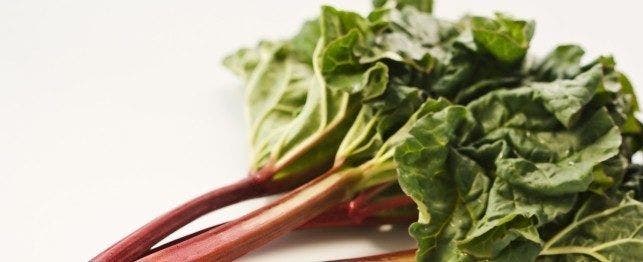
Rhubarb Toxicity in Dogs
Overview for Rhubarb Toxicity in Dogs
Rhubarb (or Rheum rhabarbarum) is a perennial plant common in the United States which is frequently eaten cooked or raw. It is also slightly toxic to dogs when ingested.Rhubarb is a member of the Polygonaceae family. It has large triangular leaves and a thick green and red stalk with a similar appearance to celery. These stalks are generally harvested in the spring or early summer when plump and juicy. Rhubarb is typically cooked with sugar and used in desserts such as pie. It is classified as a vegetable in most parts of the world; however, it has been classified as a fruit in the United States since 1947.The stalk of the rhubarb plant is not considered toxic to dogs and even has laxative properties which grant it therapeutic value for treating constipation. In comparison, the leaves contain soluble calcium oxalate crystals and oxalic acid which can be harmful when ingested. Oxalate salts bind with the body’s calcium and remove it from the bloodstream causing complications. Symptoms of Rhubarb toxicity in dogs are the result of low blood calcium and ultimately renal (kidney) failure.Toxicity due to rhubarb has been observed in dogs, cats, humans, and large animals. Although the concentration of toxic substances in the leaves vary, the leaves are somewhat bitter and most animals won’t ingest enough of the plant to cause notable health issues. Toxicity is more common in large animals that feed from pastures containing rhubarb (sometimes due to discarded plant waste from humans).
What to Watch For
The following symptoms can be indicative of rhubarb toxicity:
- Tremors
- Seizures
- Staggering
- Lack of appetite
- Lethargy
- Weakness
- Drooling
- Increased respiratory rate
- Diarrhea
- Vomiting
- Bloody urine
- Increased thirst and urination
- Coma
Diagnosis of Rhubarb Toxicity in Dogs
The diagnosis of rhubarb toxicity can be difficult unless ingestion of the offending leaves is known. Rhubarb toxicity can appear similar to other toxicities or seizure disorders.
When investigating the cause of illness, your veterinarian is likely to recommend blood tests and urinalysis. The results may indicate increased chemical values in the kidneys due to the impact of the toxin. There is no specific test for rhubarb toxicity.
Treatment of Rhubarb Toxicity in Dogs
Treatment of rhubarb toxicity in dogs is based on the severity of the signs. Most dogs will require hospitalization with intravenous fluids. It may be necessary to administer medication to control seizures.
Recent ingestion may be treated with induction of vomiting to eliminate the toxic plant from the animal’s stomach and prevent absorption. Call your veterinarian for recommendations.
Home Care
There is no home care for rhubarb toxicity. If you suspect that your dog has ingested rhubarb leaves, consult a veterinarian immediately.
Preventative Care
The only way to prevent rhubarb toxicity is to preventing exposure by limiting access to the plant.